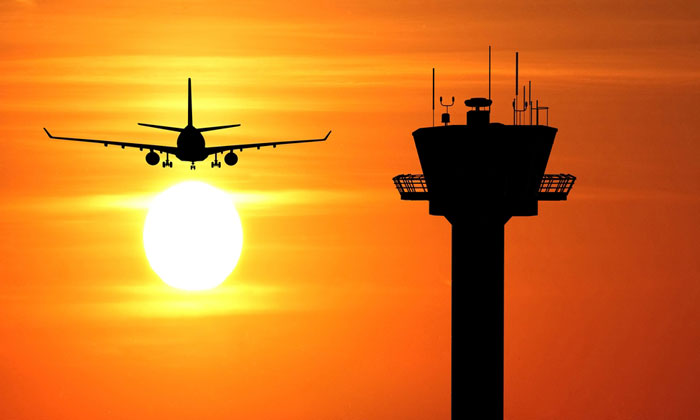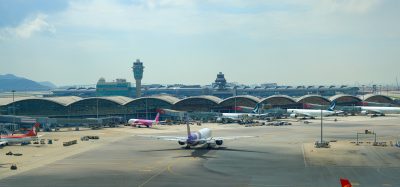60 seconds with Steve Anderson, NATS Head of Airport Transformation
- Like
- Digg
- Del
- Tumblr
- VKontakte
- Buffer
- Love This
- Odnoklassniki
- Meneame
- Blogger
- Amazon
- Yahoo Mail
- Gmail
- AOL
- Newsvine
- HackerNews
- Evernote
- MySpace
- Mail.ru
- Viadeo
- Line
- Comments
- Yummly
- SMS
- Viber
- Telegram
- Subscribe
- Skype
- Facebook Messenger
- Kakao
- LiveJournal
- Yammer
- Edgar
- Fintel
- Mix
- Instapaper
- Copy Link
Posted: 20 June 2017 | Steve Anderson | Head of Airport Transformation | NATS | 1 comment
Steven Anderson, Head of Airport Transformation details the concept of a digital air traffic control tower in an exclusive interview for International Airport Review.


What did you think when you first heard about the concept of a digital air traffic control tower?
I first head about the concept about 4 years ago, and as a former tower controller I was sceptical. My impression was that we’d be looking at grainy CCTV images and I wondered how you could possibly manage an airfield without that window view that tower controllers rely on. I was last valid at a busy single runway London airport, so I think its fair to say I needed some convincing that cameras could ever be better than my beloved VCR. It’s often said that the best person to lead a change programme is a sceptic, so when I took on this role and became responsible for digital towers, the one thing I was going to make sure of was that controllers would have a solution and tool set that enhanced their environment to making the job less complex and safer..
We’ve seen the news that London City Airport will be adopting a digital tower in 2019. Do you expect other airports to follow?
Yes, even before the announcement we had been discussing the concept with a number of UK and international airports, all of whom understood the concept, but were reserved in their response. I can understand that as it can be quite a concept to come to grips with, but after the City announcement we’ve been inundated with requests for visits and for us to explain the benefits it can bring to some airports, so I think we’ll see more and more of the market opt for a digital solution over the next few years. NATS has also just bought a 50% stake in Canadian digital tower company, Searidge Technologies so we’re taking this digital revolution extremely seriously.
What are the main reasons airports are getting interested?
The reasons vary from airport to airport. For some it’s about replacing an old control tower in a more cost effective fashion. For others it releases the value of the land that the current tower is built on so that can be used for developing terminals and stands to improve the passenger experience. Some airports are also looking to digital as a potential solution for contingency operations, so the message to the industry is that digital towers provide flexibility. They won’t be the solution in every case, and NATS will continue to provide the traditional airport based service, but for the first time customers have a choice, and that has been enabled by the digital solution.
How concerned are you about operational resilience and cyber security?
Cyber security is one area of life where it pays to never be complacent. Handling and protecting large quantities of operational data is something that NATS has been well practised in for many years and we have invested significantly in cyber security resources and expertise. As a part of the UK critical national infrastructure, we constantly review our procedures and technologies to understand, and guard against, the latest threats and that thinking is very much a part of our plans to move to a digital tower for London City Airport. As an example we have increased the resiliency of certain aspects of the design by a third, going above and beyond the minimum required.
Do you think we’ll ever see a physical control tower built again?
Ha! Maybe not! Certainly given the technology that’s now available you could argue that it’s not necessary. But I think in reality, digital towers won’t be the right solution for every airport and there will still be a need to have controllers on some airports. The difference between the two operations, apart from geography, is that the team working in the digital tower will not only be able to see and hear the aircraft on the airfield, but they will also have digitised images and controller tools to improve the airport’s overall operational efficiency and safety.


Related topics
Air traffic control/management (ATC/ATM), Airport Collaborative Decision Making (A-CDM), Airport development, Cyber-security, Digital transformation, Information technology (IT), New technologies, Remote digital towers



















Bit liberal with the truth regards the main reason ? NATS have continually lost airport contracts because their cost base in staffing is rupturing their ability to negotiate said contracts. Birmingham, Gatwick, Edinburgh and so on…..
Be truthful. ATCO’s don’t do the engineering thing, let alone understand it.